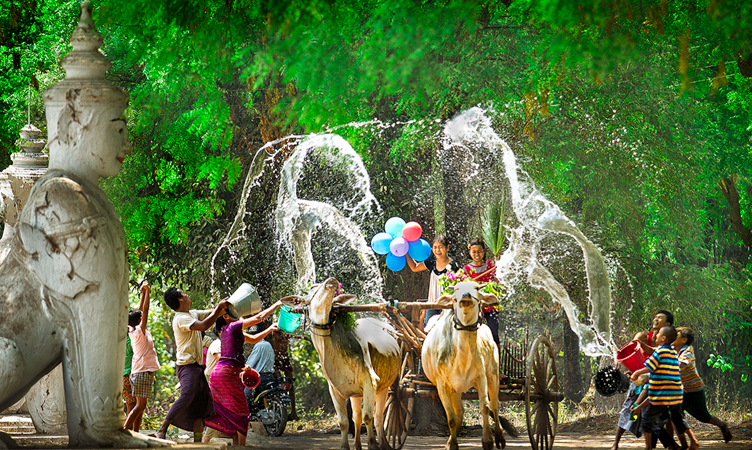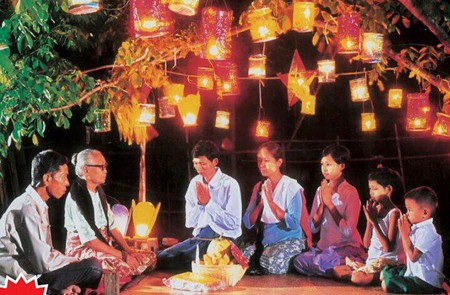The Water Festival is the New Year's celebrations that take place in Southeast Asian countries such as Myanmar, Cambodia,
Laos, and Thailand as well as Yunnan, China. It is called the 'Water Festival' by Westerners because
people splash / pour water at one another as part of the cleansing ritual to welcome the new year.
Traditionally people gently sprinkled water on one another as a sign of respect, but as the new year
falls during the hottest month in South East Asia, many people end up dousing strangers and passersby
in vehicles in boisterous celebration.
The act of pouring water is also a show of blessings and good
wishes. It is believed that on this Water Festival, everything old must be thrown away, or it will
bring the owner bad luck. The annual Water Splashing Festival of the Dai ethnic minority falls during
the New Year celebrations of the Dai Calendar. It is the most important festival observed by the
Dai ethnic people of Xishuangbanna Prefecture, and, similar to its direct neighbor Laos' Songkran
festival, it involves three days of celebrations that include sincere, yet light-hearted religious
rituals that invariably end in merrymaking, where everyone ends up getting splashed, sprayed or doused
with water.
The festival lasts for three days. The first two days's activities are concentrated on
the banks of the Lancang River. On the first day, a grand celebration marks the beginning of the
festival. An out-door market is set up, where locals go for new year shopping. It is also a great
place to purchase local souvenirs. Local food and snacks are other highlights traveler may not want
to miss. Artists create sand cavings on open space close to the market. A dragon boat race is held
on the Lancang River to ring out the old year in the afternoon. At night, the banks of the river
are colorfully lit, and locals float river lanterns on the river. Floating river lanterns is an old
tradition in China, which is still preserved in many cities today. The practice is thought to drive
bad luck away and bring good luck. The third day, the climax of the festival, is reserved for water
splashing.
On that day, the Dai put on their newest and best clothes, then assemble at the local
Buddhist temple, where the monks chant Buddhist scriptures. Afterward, a symbolic water splashing
ritual is enacted whereby a Buddhist statue, with pomp and ceremony, is first coaxed out of the temple
to the courtyard, then is splashed with water. This important ritual is called 'Bathing the Buddha'.
The completion of the 'Bathing the Buddha' ritual serves as the signal that encourages ordinary mortals
to themselves engage in mutual water splashing. Accordingly, people flock to the streets with pots,
pans, bottles, or whatever, where they uninhibitedly splash, spray and douse each other with water,
with the same gusto with which Westerners engage in a good snowball free-for-all. The Water Splashing
ceremony, however, is more than just good-natured fun; it also contains a religious element: water
is regarded by the Dai as a symbol, firstly, of religious purity, but also of goodwill among people.
Therefore, splashing a fellow human being with water during the Water Splashing Festival, whether
a close neighbor or a fellow villager, or even a stranger, is an expression of the desire for good
luck and prosperity to that person.


|



